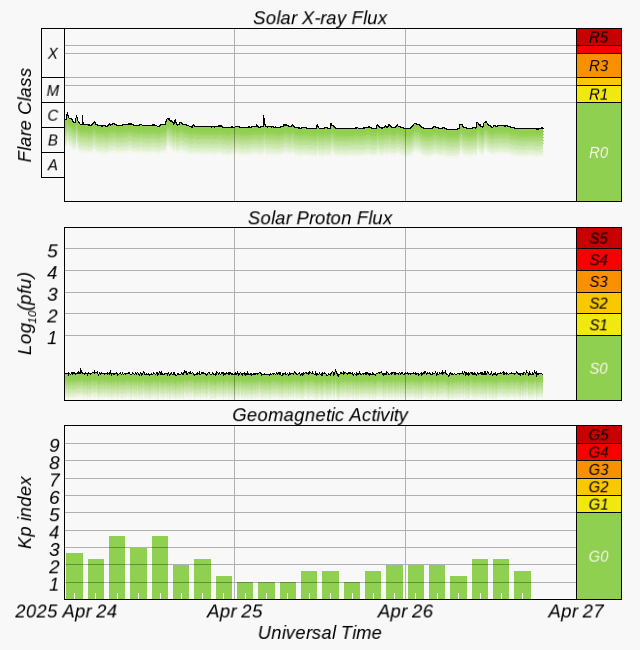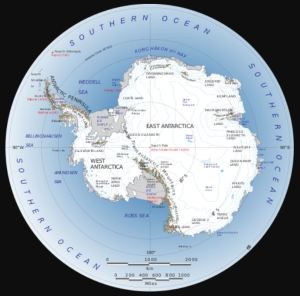Once again, evidence of times in the past long before the industrial era when warming similar to or in excess of the present ‘crisis’ conditions occurred in a polar region. Natural climate variation is the norm.
– – –
Studying the response of Antarctic ice sheets to past warming episodes is essential to understand how they may respond to the present warming climate, as their melting and collapse can contribute to global sea level rise, says Phys.org.
Detailed records of past ocean temperatures close to the continent are rare, but clues to how ice sheets and sea ice responded to global conditions in the past can be found in funny places—even in the remains of animals that once lived there.
A study led by the University of Maine used the presence (and eventual lack thereof) of elephant seals to illustrate how the area transformed in a warm period in the recent past.
The research was published online Feb. 7, 2023, and will be in the March 2023 edition of the journal Quaternary Science Reviews.
A team of researchers led by Brenda Hall, professor at the University of Maine School of Earth and Climate Science, and Climate Change Institute, studied the remains of the southern elephant seal at sites along the Victoria Land Coast of the Ross Embayment, which borders both the West and East Antarctic ice sheets.
Today, the Victoria Land Coast is largely free of elephant seals and even penguins in many places because of shelves of permanent sea ice frozen to its beaches. Besides, modern elephant seals are based largely on subantarctic islands north of the Ross Sea.
Past UMaine research, however, uncovered elephant seal remains in the beaches suggesting the species flourished in the area during warm periods of the Holocene. They theorized that the seals were able to occupy the beaches in a period of warmth before extensive sea ice pushed them off of the present-day coast.
For this study, the scientists gathered the mummified and skeletal remains of elephant seals, as well as their molted skin, buried under rocks and snow banks along the Victoria Land Coast, ultimately recovering 305 samples, which they radiocarbon dated and tested for ancient DNA.
“Southern elephant seals today tend to haul out in much warmer areas than the Ross Sea,” Hall says. “We were able to use the presence of their molted skin and hair, as well as some bones and mummies desiccated by the polar wind, to show that these seals had once made the Ross Sea their home.”
The results from the molted skin, bones and other remains showed that southern elephant seals not only once occupied the Ross Sea, but were present on the Victoria Land Coast from about 7,000 and 500 years ago. The presence of the seals at this time indicated that there was a reduced amount of ice covering the sea during this time of the Holocene, which coincides with other records of ocean temperatures and circulation in the Ross Sea.
“Our work shows that for much of the Holocene, the Ross Sea was less icy and presumably warmer than it is today and this warmth may have driven retreat of the West Antarctic Ice Sheet from the Ross Sea during the last 8,000 years and future warming could continue to push ice retreat,” Hall says. “However, ocean temperature may not be the entire story.”
Full article here.
– – –
Footnote – BBC News yesterday:
Antarctica sea-ice hits new record low
Even the BBC has to admit the significance of a few seasons is hard to gauge…
‘Scientists consider the behaviour of Antarctic sea-ice to be a complicated phenomenon which cannot simply be ascribed to climate change.
Looking at the data from the last 40-odd years of available satellite data, the sea-ice extent shows great variability. A downward trend to smaller and smaller amounts of summer ice is only visible in the past few years.’
– – –
In 2017: Scientists found 91 volcanoes under Antarctica
‘The volcanoes are located in the West Antarctic Rift System.’
[see link for map]







So the study says it was warmer but the BBC says “it’s complicated”. And why does the Antarctic get to be “complicated” but the Arctic doesn’t?
BBC:
Data sources other than satellites allow us to look back at least as far as 1900.
These indicate Antarctic sea-ice was in a state of decline early in the last century, but then started to increase.
Recently it has shown great variability, with record satellite winter maximums and now record satellite summer minimums as well.
– – –
Antarctic sea-ice mostly faces open ocean, unlike the Arctic, so more subject to wind and sea effects.
Antarctic Circumpolar Current
The current is circumpolar due to the lack of any landmass connecting with Antarctica and this keeps warm ocean waters away from Antarctica, enabling that continent to maintain its huge ice sheet.
https://en.wikipedia.org/wiki/Antarctic_Circumpolar_Current
Och, just another old elephant in the room
Clue to rising sea levels lies in DNA of 4m-year-old octopus, scientists say
Sat 4 Feb 2023
Scientists say a collapse in the ice sheet more than 100,000 years ago likely made it possible for Turquet’s octopus populations to mix together by travelling between the south Weddell Sea and the Ross Sea.
. . .
According to the most recent UN climate assessment, temperatures during the last interglacial were between 0.5C and 1.5C warmer than the period just before the industrial revolution. Sea levels were between 5 and 10 metres higher than today.
. . .
“If this [octopus research] is correct then there are sensitivities in the Earth system that lead to planetary scale sea level rise.”
https://www.theguardian.com/world/2023/feb/05/clue-to-rising-sea-levels-lies-in-dna-of-4m-year-old-octopus-scientists-say
– – –
No fuel-burning needed to cause that climate.
Reblogged this on Climate Collections.
Data trumps models, as ever…
FEBRUARY 19, 2023
Was Earth already heating up, or did global warming reverse a long-term cooling trend?
by The Conversation
We have two options: We can find information about past climate stored in natural archives, or we can simulate the past using climate models.
. . .
Our two types of evidence offer different answers regarding the Earth’s temperature trend over the 6,000 years before modern global warming. Natural archives generally show that Earth’s average temperature roughly 6,000 years ago was warmer by about 0.7 C (1.3 F) compared with the 19th century median, and then cooled gradually until the Industrial Revolution. We found that most evidence points to this result.
Meanwhile, climate models generally show a slight warming trend, corresponding to a gradual increase in carbon dioxide as agriculture-based societies developed during the millennia after ice sheets retreated in the Northern Hemisphere.
https://phys.org/news/2023-02-earth-global-reverse-long-term-cooling.html
– – –
No use trying to gloss over climate model failures.
this whole climatgeddon scam reminds me of the “how many angels can dance on the head of a pin” nonsense. The various grifters go on and on and prove little or nothing while real scientists find marvelous things like the sea lion and plant life in Antarctica from under miles of ice.
———
“The influence of mankind on climate is trivially true and numerically insignificant.” – Dr Richard Lindzen
[…] From Tallbloke’s Talkshop […]
Hi Rog
This is probably of no interest now, but when I came across your post today it rang a bell.
Holocene elephant seal distribution implies
warmer-than-present climate in the Ross Sea
PNAS 2006
This paper, and the bind eye turned to such inconvenient research by the IPCC, drove me into active climate scepticism all those years ago. So something has changed over the last couple of decades? TonyN